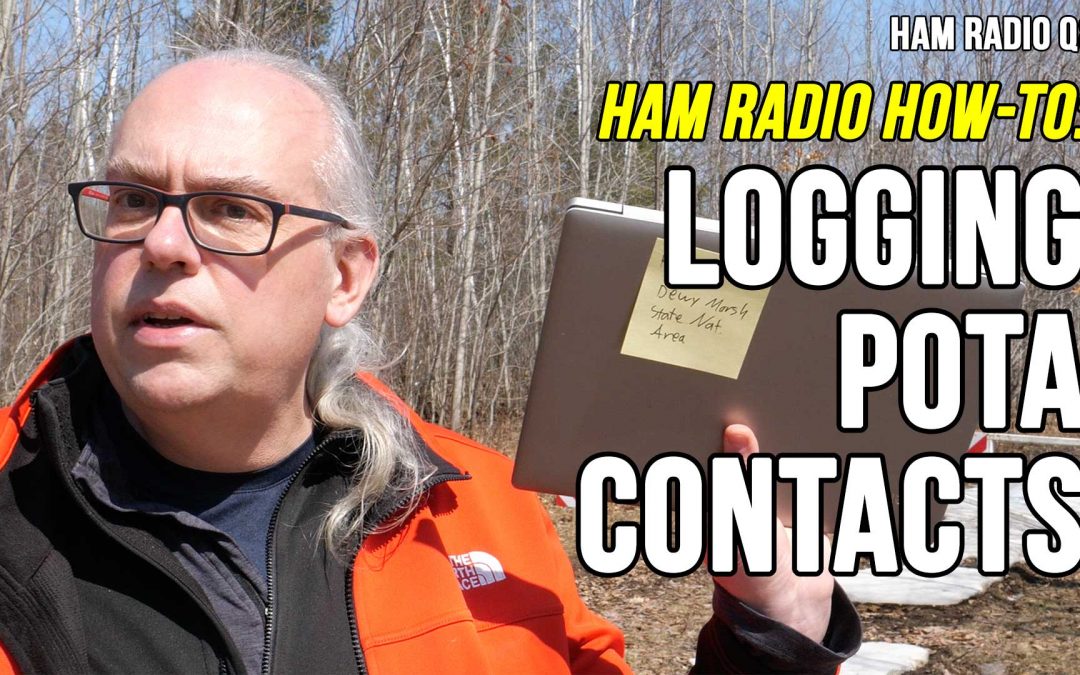We’re getting back to basics by looking at key parts of a Parks on the Air activation. This week I head to Dewy Marsh State Natural Area in Wisconsin (POTA K-8209) to illustrate the important task of logging all your hunters during the park activation
First off, lets talk about paper logging. Logging your contacts on paper is probably the easiest and simplest method of capturing the contact data. Your paper log isn’t going to crash and you won’t run out of battery power, although I suppose your pen could dry up. But nope, logging on paper is safe.
For paper logging, my preferred method is with a steno pad. I like these pads from Field Notes as the paper is heavier than most and the tough chipboard covers makes a great writing surface.
The challenge with paper logging is getting those contacts into the computer so your hunters can get their Parks on the Air credit. There are a few methods you can go about this.
The Parks on the Air site has a page that allows you to build a log file and submit it to the database. This method works well with smaller log files your entries won’t be saved until you hit the submit log button. So you will lose your working log if the page crashes or you navigate away from it.
Another, safer option is to recreate your log at home using a logging program like Hamrs, ACLog, or Fast Log Entry. These programs allow you to build and edit a log file so you can create the necessary ADIF file to upload to the parks on the air site.
But with a park activation that results in a hundred or so contacts, this extra work is why I moved away from paper logging and only use it as a backup method out in the field.
Instead I’m using Hamrs to log my contacts during an activation. Hamrs runs on a variety of platforms like Windows, Mac, Linux, ios, and android. I’m using an older Windows 10 notebook computer for logging.
You’ve probably seen those videos of other activators extolling the virtues of the inexpensive Evolve Maestro computer. This Lenovo I purchased three years ago has similar specs, with the exception of 12 volt charging. But honestly, the battery runs all day long on it, especially if you aren’t using the wifi, and I don’t use wifi or a data connection out in the field. I’ve literally logged for 8 hours straight and still have 25% battery life on it, so it is a very power efficient computer.
The only down side with this computer is that it really dogs it with the data modes and that extra horsepower required for them will sap your battery life.
The big advantage of Hamrs is that it is multi platform. So if you have a preferred device, Hamrs will probably run on it. That makes it easy to convert an old tablet, mobile device, or notebook computer into your logging machine. The program is quite stable, although it does have its quirks. There is a strong user community that’s helpful in working around those problems.
After the activation I will export the log in ADIF format from Hamrs and upload it into the Parks on the Air site. There are other logging programs out there, like N3FJP’s AClog, but I’ve found the simplicity of Hamrs to be an asset for rapid logging during a Parks on the Air activation. So lets go back into the field and log some contacts.
Links and Resources
Field Notes Steno Book: https://amzn.to/41l0sfu
Hamrs Logging App: www.hamrs.app
As a bonus, patrons can view the full, unedited video of my Parks on the Air activations. Visit my page on Patreon for details: https://www.patreon.com/posts/pota-unedited-k-81414449
I do return QSL, if you made a contact with me and would like a QSL, please send me one. Return postage not necessary, but always appreciated. As they say, KB9VBR is ‘good in the book.’
Like what you see? You can leave me a tip:
https://www.paypal.me/kb9vbr
Become a patron! Unlock exclusive content at: https://www.patreon.com/kb9vbrantennas
Support Ham Radio Q&A by shopping at Amazon: http://amzn.to/2kO6LH7

Recent Comments